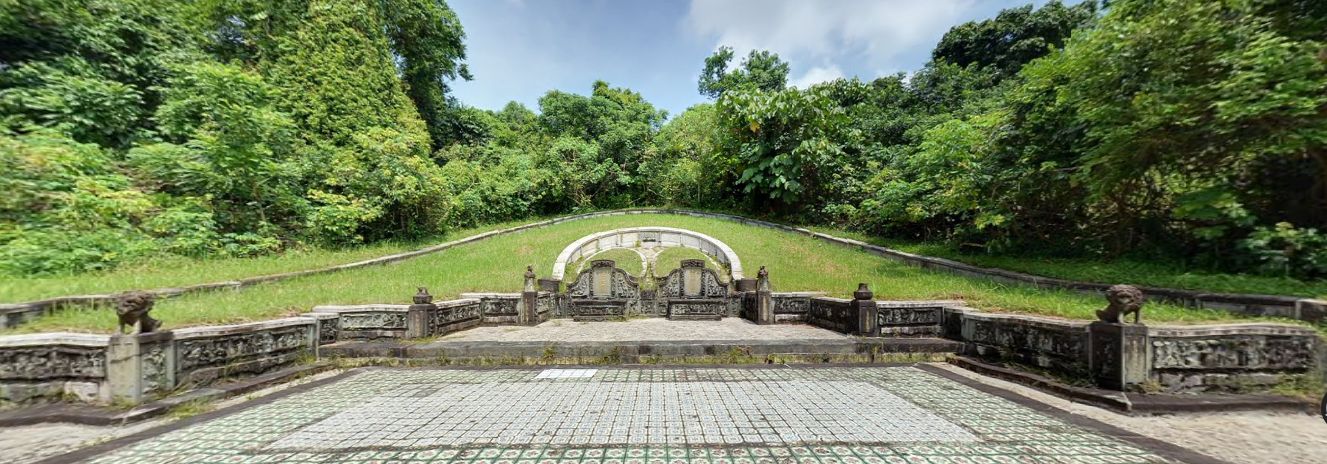Located in the central area of Singapore, bordering Lornie Road and parts of the Pan-Island Expressway, Bukit Brown Cemetery (BBC) was the first Chinese municipal cemetery in colonial Singapore. As early as 1904, the Chinese community in Singapore had been lobbying the municipal government to set aside a cemetery for non-Christian Chinese. At that time, such burial needs were taken care of through private family cemeteries or clan association cemeteries. However, changes in the laws then were constricting the amount of space available for such burial grounds, which was why the Chinese clamored for a public cemetery to take care of their burial needs.
The colonial government was reluctant to venture into starting a municipal cemetery for the Chinese because they expected that the Chinese, with their beliefs in geomantic principles (with very individualized preferences for size and direction, and therefore given to what would appear like a haphazard layout), would not be willing to subject themselves to the grid-like standard plots of a municipal cemetery. However, by the late 1910s, the municipal government was convinced that such a cemetery was feasible, and by 1919 had acquired 213 acres of land for the public cemetery.
In 1922, BBC became the first Chinese municipal cemetery to be opened by the colonial government. It was a cemetery that did not require communal affiliations, that is, a relationship with a family or clan, before one could be buried. Thus, it was the first Chinese cemetery that facilitated a pan-Chinese identity in organizational and spatial terms. That is, Chinese of diverse communal origins, such as Hokkien, Teochew, Cantonese, Hakka and Hainanese, or surnames could be buried next to each other.
Initially, the Chinese were reluctant to subject themselves to the discipline of a municipal cemetery. It was more than three months before the first burial took place, and only 93 were buried in the cemetery during its first year of operation. However, by 1929, more than 40% of all burials within municipal limits were at Bukit Brown. It became acceptable and commonplace for Chinese of different communal origins, whether rich or poor, elite or commoner, to be buried at Bukit Brown. This trend continued till 1944 when the cemetery became full, although those with reserved plots could still be buried in BBC till it was officially closed in 1973.
A Chinese cemetery like BBC is a familial space. Every year, during the Qingming Festival in March and April, Chinese families will trudge through the undulating landscape to locate their ancestors' tombs, clear the overgrown foliage, and make offerings to their forebears. This is a family affair and the grave is a space for families to commemorate their ancestors.
However, BBC is more than just a familial space. It is also intertwined with the early history of Singapore. Among those interred at BBC were prominent leaders of the local Chinese community, philanthropists, municipal commissioners, Chinese revolutionaries and literati, and even colonial office bearers from the Dutch East Indies. Examples of the aforementioned well-known and prominent Singapore residents include Cheang Hong Lim, Chew Boon Lay, Lim Chong Pang, Ong Sam Leong, Ong Boon Tat, See Tiong Wah, Tan Chor Nam, Khoo Kay Hian, Khoo Seok Wan, Ho Siak Kuan and Wee Chim Yean.
At the same time, the materials used in the construction of tombs, such as fine stone reliefs from China and decorative ceramic tiles from Europe, demonstrate a material culture that is very much integrated with the global economy of the early 20th century. Furthermore, the cemetery features some of the largest, most intricate and oldest graves found in Singapore. For example, the tomb of Ong Sam Leong and his wife is said to be the largest tomb in Singapore and it is one of a small number that features statues of Indian watchmen standing guard over the grave.
In May 2011, the Singapore government announced that BBC had been earmarked for housing and in September, initial development plans were unveiled in the form of a dual four-lane road that would be built through the cemetery, starting 2013. The announcement was met with protests and two civil society groups — the Singapore Heritage Society and the Nature Society (Singapore) — presented position papers on the preservation of BBC. A number of online groups and sites dedicated to BBC were also established and volunteers have also been organising weekly tours for the public.
A project by National Heritage Board
in partnership with ODOCO Agency and Dr. Hui Yew-Foong.
(The above text is partially adapted from Hui Yew-Foong, 2012, "Debating Bukit Brown: bringing a cemetery to life in Singapore", in The Newsletter, issue 62, p.44, published by the International Institute for Asian Studies, Leiden.)
The Rites and Rituals of Bukit Brown Cemetery
Watch this specially commissioned documentary on Bukit Brown Cemetery’s intangible cultural heritage seeks to document the rites and rituals practised at the cemetery during Qing Ming, Seventh Month Ghost Festival and Winter Clothing Festival.
Relocation of Bukit Brown Cemetery Gates
Watch this short documentary by the National Heritage Board captures the extraction of Bukit Brown Cemetery’s iconic gates and columns, and is the first in a three-part series documenting the refurbishment of the gates.







